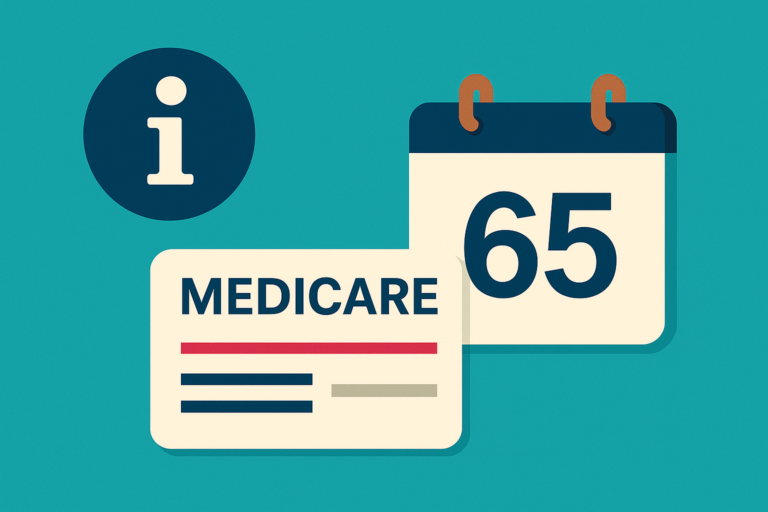Turning 65 is a major milestone, and for many Americans, it also marks the beginning of their journey with Medicare. But navigating this federal health insurance program can be overwhelming if you’re not sure where to start. This article breaks down the essential details about Medicare at 65, including when to enroll, what each part covers, and how to choose the right plan for your needs.
Whether you’re retiring soon or still working, understanding Medicare is critical to making the best health and financial decisions. Let’s walk through it together.

What Is Medicare and Why Does It Start at 65?
Medicare is a federal health insurance program primarily for people aged 65 and older, although younger individuals with certain disabilities may also qualify. The reason 65 is the magic number dates back to the program’s inception in 1965, aligning with the typical retirement age at the time.
If you’re turning 65 and have paid Medicare taxes for at least 10 years (or your spouse has), you’re likely eligible for premium-free Part A, which covers hospital insurance. But there’s much more to Medicare than just hospital coverage — and that’s where understanding your options becomes vital.
The Four Parts of Medicare: A Quick Overview
To make informed choices, it helps to understand what each part of Medicare covers:
Medicare Part A – Hospital Insurance
Covers:
Inpatient hospital stays
Skilled nursing facility care
Hospice care
Some home health services
Medicare Part B – Medical Insurance
Covers:
Doctor visits
Outpatient care
Preventive services
Medical equipment
Medicare Part C – Medicare Advantage Plans
These are private insurance plans approved by Medicare. They often include:
All Part A and B services
Extra benefits like dental, vision, hearing
Prescription drug coverage (sometimes)
Medicare Part D – Prescription Drug Coverage
Covers:
Prescription medications
Vaccines
Certain preventive drugs
You can add Part D to Original Medicare or choose a Medicare Advantage plan that includes it.
When Should You Enroll in Medicare?
Timing is everything. You have a 7-month Initial Enrollment Period (IEP):
Begins 3 months before your 65th birthday
Includes your birthday month
Ends 3 months after your birthday month
Failing to enroll during this window could lead to late penalties — especially for Part B and Part D — unless you have creditable coverage from an employer or union plan.
If you’re still working and have health coverage, you may be able to delay enrollment without penalties. However, it’s important to compare your work plan to Medicare, as you may benefit from switching.
Common Medicare Myths at 65
Let’s clear up a few misconceptions:
“Medicare is free.”
Only Part A is usually free. Part B and Part D come with premiums, deductibles, and coinsurance.“I’ll be automatically enrolled.”
This only happens if you’re already receiving Social Security. If not, you’ll need to actively enroll.“Medicare covers everything.”
Not quite — dental, vision, hearing aids, and long-term care are not covered under Original Medicare.
How to Get Help Choosing the Right Medicare Plan
Medicare is not one-size-fits-all. Your medications, preferred doctors, and expected healthcare needs can dramatically change which plan is best for you. At D. Marino Medicare, we simplify the process and match you with plans that fit your lifestyle and budget.
Our experienced team is ready to:
Compare plans in your ZIP code
Explain all costs upfront
Ensure you never miss a critical deadline
How to Get Help Choosing the Right Medicare Plan
Starting Medicare at 65 doesn’t have to be stressful — if you’re prepared. Begin researching 3–6 months before your 65th birthday, understand your options, and lean on trusted Medicare professionals when needed.
Ready to take the next step? Explore:
Frequently Ask Question(FAQs)
What happens if I don’t sign up for Medicare at age 65?
If you miss your Initial Enrollment Period and don’t have other creditable health coverage, you may face late enrollment penalties for Medicare Part B and Part D. These penalties can permanently increase your monthly premiums.
Can I keep my employer insurance and delay Medicare?
Yes, if you’re still working and have credible employer-sponsored insurance, you can delay Medicare Part B and Part D without penalties. Be sure to confirm your plan meets Medicare’s requirements for credible coverage.
What is the difference between Medicare Advantage and Original Medicare?
Original Medicare includes Part A (hospital) and Part B (medical), but lacks prescription coverage and caps on out-of-pocket costs. Medicare Advantage (Part C) is a bundled alternative that includes extra benefits like vision, dental, and drug coverage, but may have network restrictions.
Does Medicare cover dental, vision, or hearing services?
Original Medicare does not cover routine dental, vision, or hearing care. However, many Medicare Advantage Plans offer these benefits. You can review available options on our Medicare Advantage Plans page.
Can I change my Medicare plan after I enroll?
Yes, during the Annual Enrollment Period (Oct 15 – Dec 7) you can switch plans, join a Medicare Advantage plan, or return to Original Medicare. Special Enrollment Periods may also apply in certain life events.


